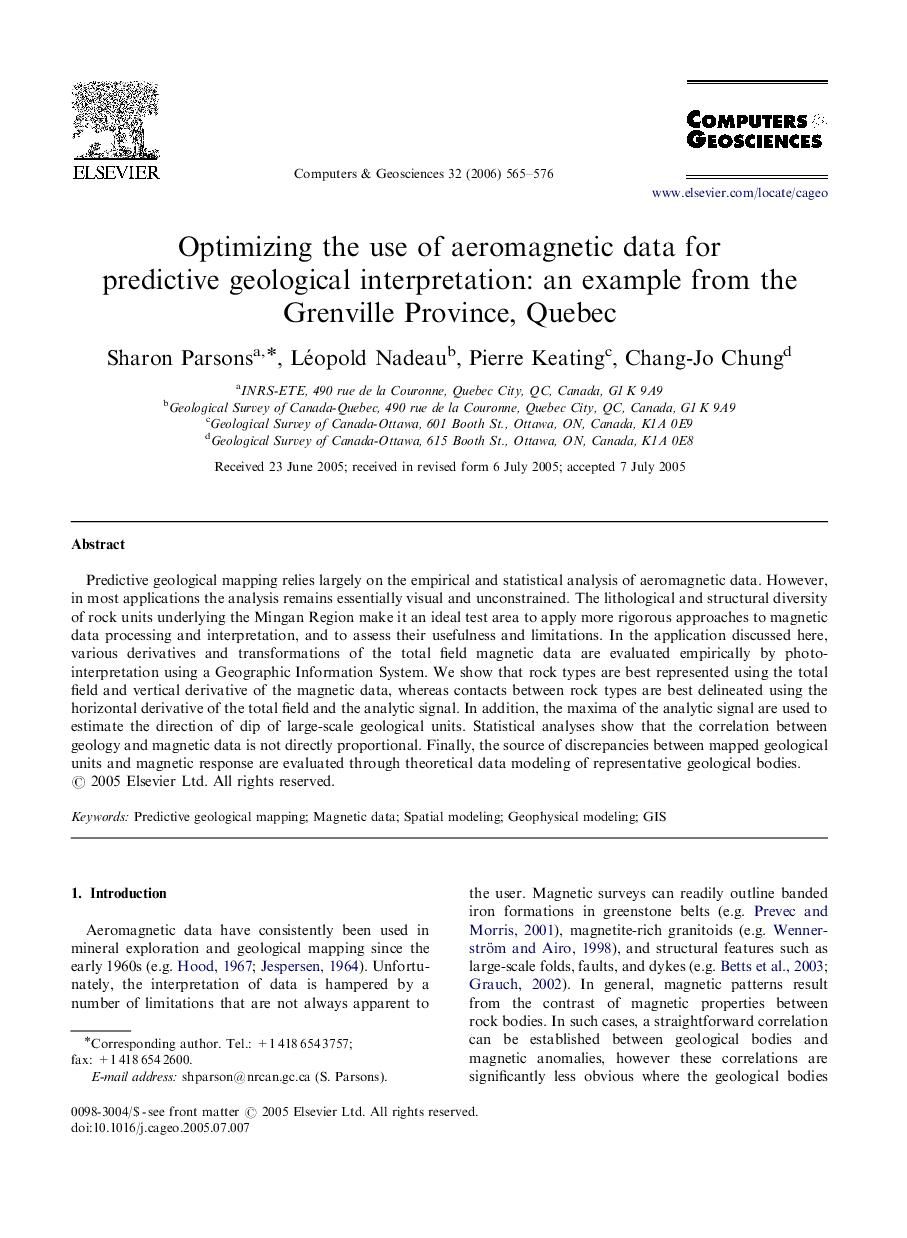| کد مقاله | کد نشریه | سال انتشار | مقاله انگلیسی | نسخه تمام متن |
|---|---|---|---|---|
| 508374 | 865193 | 2006 | 12 صفحه PDF | دانلود رایگان |

Predictive geological mapping relies largely on the empirical and statistical analysis of aeromagnetic data. However, in most applications the analysis remains essentially visual and unconstrained. The lithological and structural diversity of rock units underlying the Mingan Region make it an ideal test area to apply more rigorous approaches to magnetic data processing and interpretation, and to assess their usefulness and limitations. In the application discussed here, various derivatives and transformations of the total field magnetic data are evaluated empirically by photo-interpretation using a Geographic Information System. We show that rock types are best represented using the total field and vertical derivative of the magnetic data, whereas contacts between rock types are best delineated using the horizontal derivative of the total field and the analytic signal. In addition, the maxima of the analytic signal are used to estimate the direction of dip of large-scale geological units. Statistical analyses show that the correlation between geology and magnetic data is not directly proportional. Finally, the source of discrepancies between mapped geological units and magnetic response are evaluated through theoretical data modeling of representative geological bodies.
Journal: Computers & Geosciences - Volume 32, Issue 5, June 2006, Pages 565–576